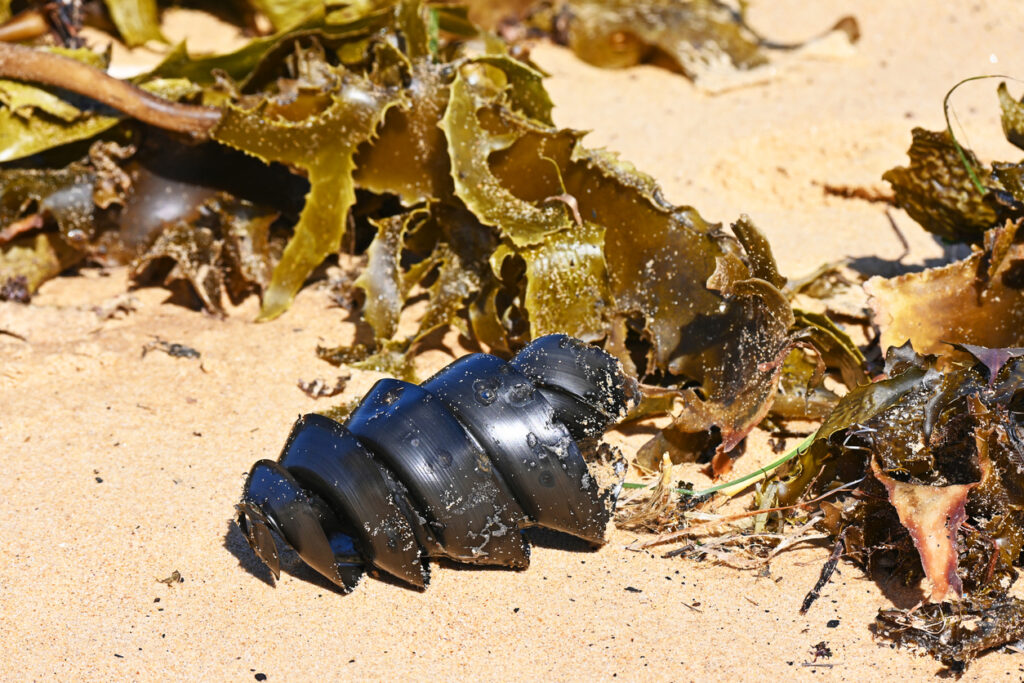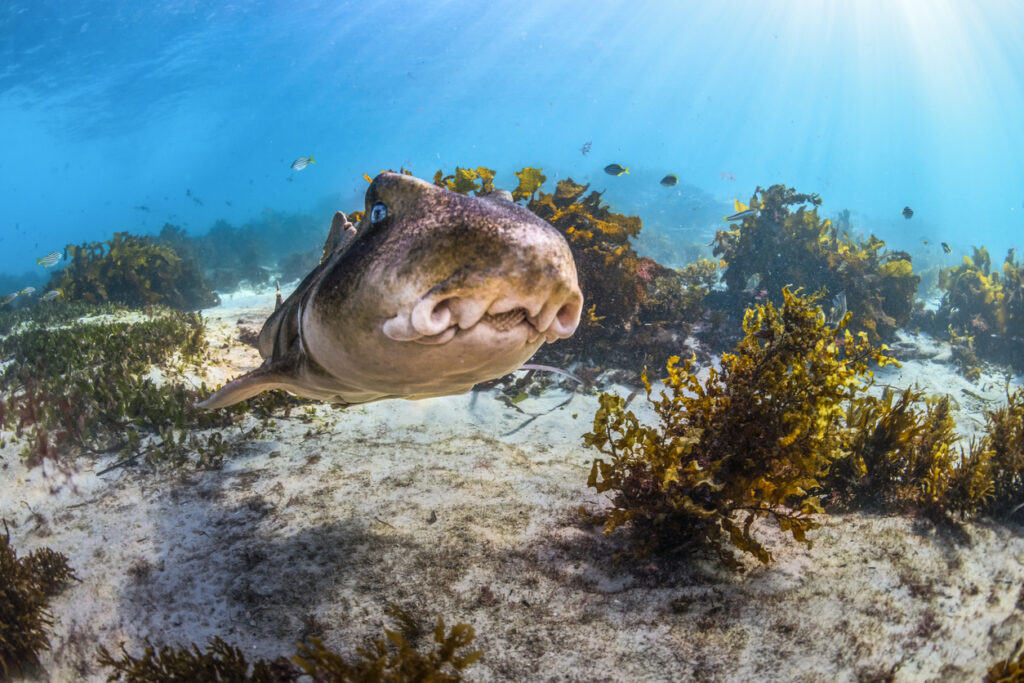Sharks are some of the oldest creatures that inhabit the earth, dating back over 450 million years. Because of this, there is massive variation in their appearance, diet, and habitat. In this blog, we’ll shine a spotlight on the Port Jackson shark, a brilliantly unique-looking shark that calls Sydney Harbour its home.
Port Jackson sharks share the same broad, flat nose as other bull sharks but what makes them unique is their harness-like bands that wrap around its body. The largest of the bull sharks, the shark can grow up to 1.65m long, although the males are slightly smaller than the females.
They lay spiral-shaped eggs
There are a 3 main ways that sharks can produce offspring, including oviparity which means egg-laying, viviparity which means to give birth to live young and ovoviviparity which means to carry eggs that hatch inside the mother, before giving birth to the young.
Port Jackson sharks are oviparous, which means the females lay eggs. What’s most interesting about this however, is that the eggs are spiral-shaped. They are incredibly unique looking, and it’s common to find them washed up on beaches.
The mother will wedge the egg into rock crevices to allow it to harden, and the young will emerge within 10-12 months.

Port Jackson sharks are nocturnal
While we don’t know a lot about the way sharks sleep, we do know that some species are diurnal which means they are more active in the day like humans, while others are nocturnal and more active at night. Port Jackson sharks fall into the latter category.
You might be wondering why they choose to rest all day and then become active at night, and the answer is pretty simple: they hunt at night when their prey is most active. It would be pretty pointless for them to spend all day swimming around with nothing to eat!
During the day, they like to relax in caves as protection.
They have some unique markings
In the same way that humans can be identified by their unique fingerprints, scientists now believe that Port Jackson sharks can be identified using photo identification. This photo identification technology is also being used to identify other shark species, such as whale sharks who have each have unique patterns.
The banding around the top of the shark is absolutely unique to the individual shark. These harness-like markings typically cross the eyes, run along its back and cross the side of the body.
They are native to Australia
As the name would suggest, the Port Jackson shark can be found in the Port Jackson region of Sydney, Australia. However, they aren’t just found in that one area, as they have also been seen in the waters surrounding the whole of Australia, although they are most numerous along the South coast.
Port Jackson sharks typically live in rocky areas on or near the bottom of the sea.
Jaw-some teeth
When you think of shark teeth, you’d likely think of very sharp, pearly whites straight from the movies, but sharks can actually have a variety of teeth types and appearances.

Port Jackson Sharks have two primary sets of teeth. Their front teeth are sharp and pointy to grab and crush their prey, with the back sets being smooth and flat, making them ideal for grinding up the likes of crustaceans.
They can eat and breathe at the same time
Port Jackson sharks possess the unusual ability to be able to eat and breathe at the same time. You might be thinking “that doesn’t seem so unusual, I do that every day!”, but you’re not a shark.
Most sharks are unable to do this because they need to be swimming forward with their mouths open in order to water to pass over their gills, but this isn’t the case for Port Jackson sharks.
They achieve this via buccal ventilation which is the generation of an almost continuous water flow over the gills by compressing and decompressing their pharynx.
They can be called “oyster crushers”
Due to their diet, Port Jackson sharks are sometimes called oyster crushers as a nod to their feeding habits.
It’s not just oysters that must be aware of their fearsome gnashers, the sharks are also known for eating sea urchins, crustaceans, and other small fish.
We think that you’ll agree that Port Jackson sharks are not just your stereotypical apex predators. Instead, they offer a fascinating insight into how sharks have evolved differently over the course of millions of years to thrive in their specific environments.
You can visit the Port Jackson shark in our Coral Seas exhibit at Bristol Aquarium!
